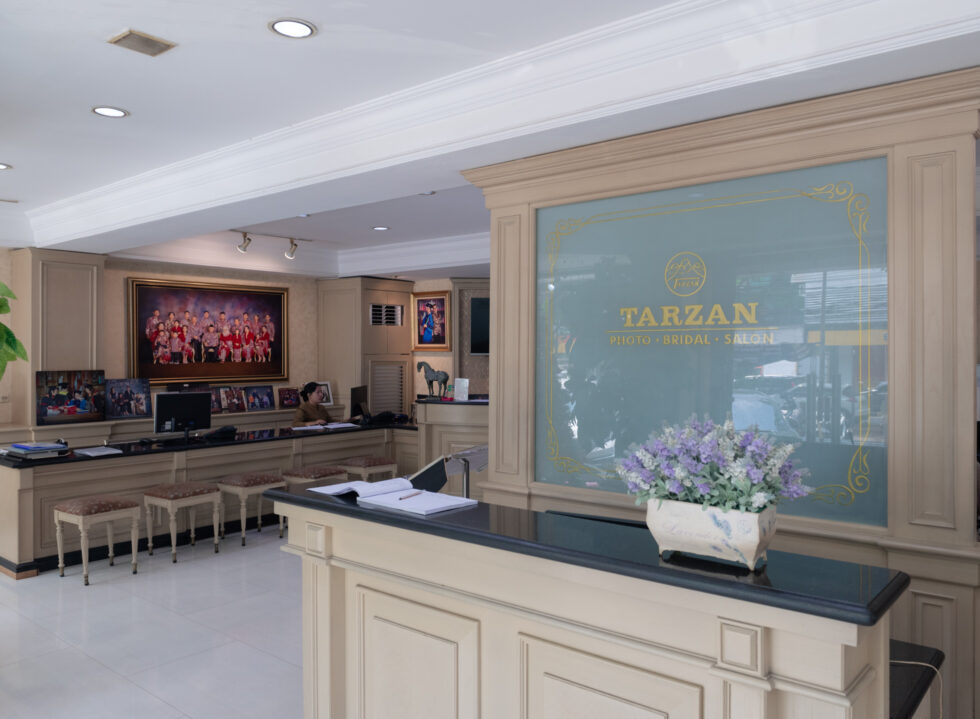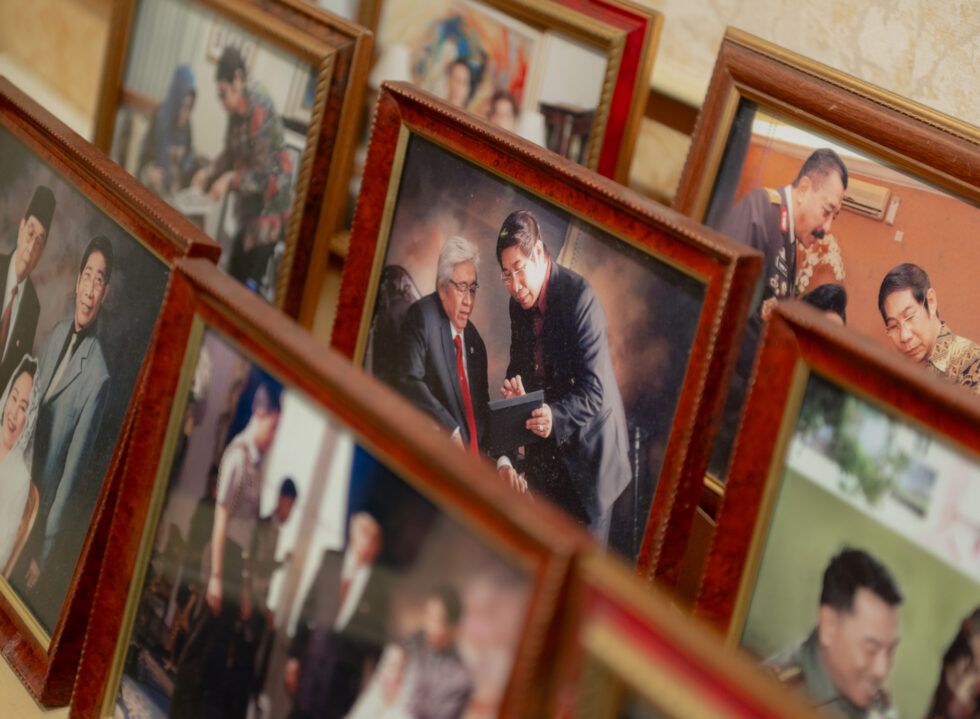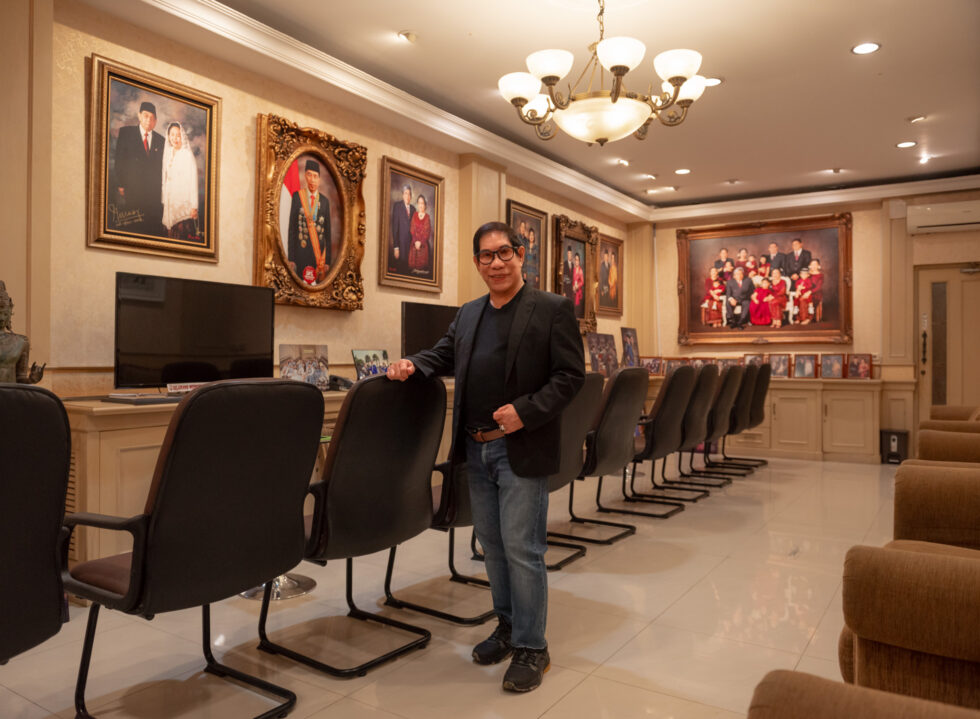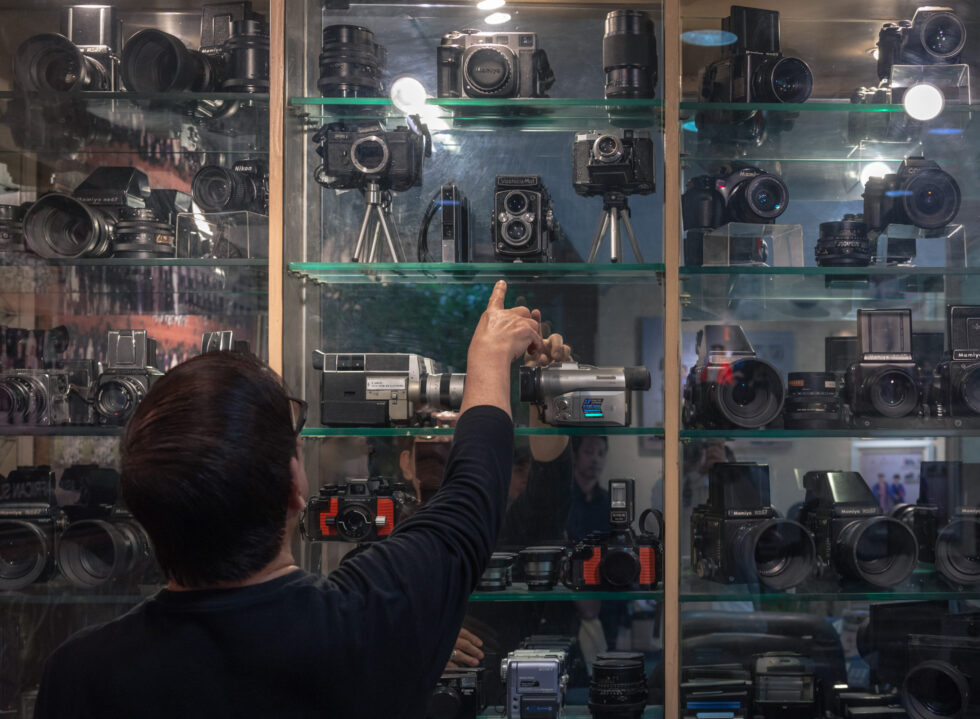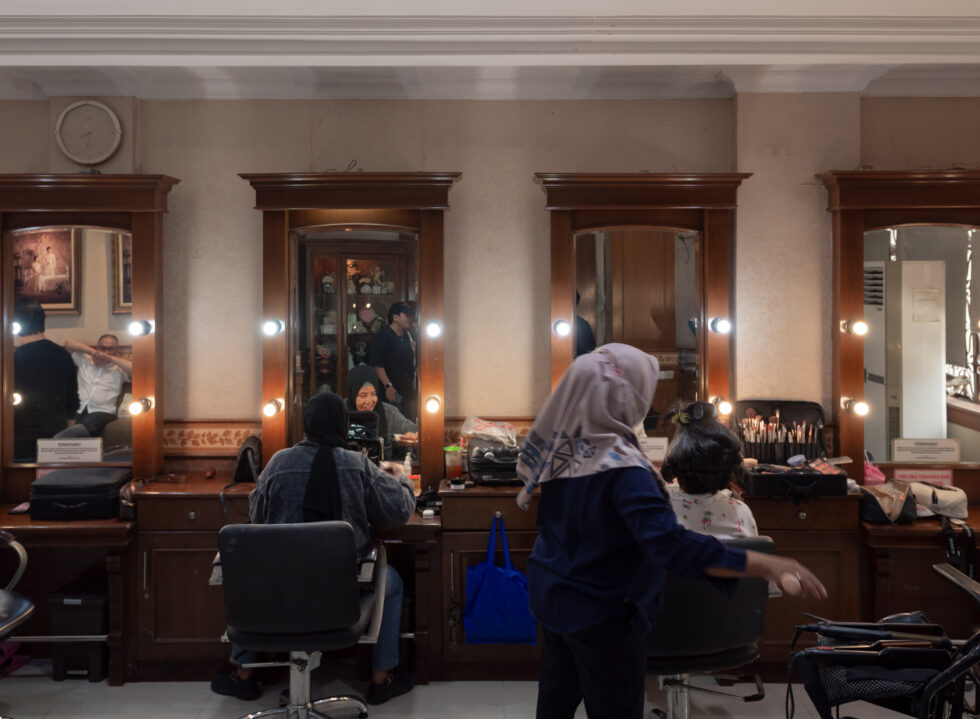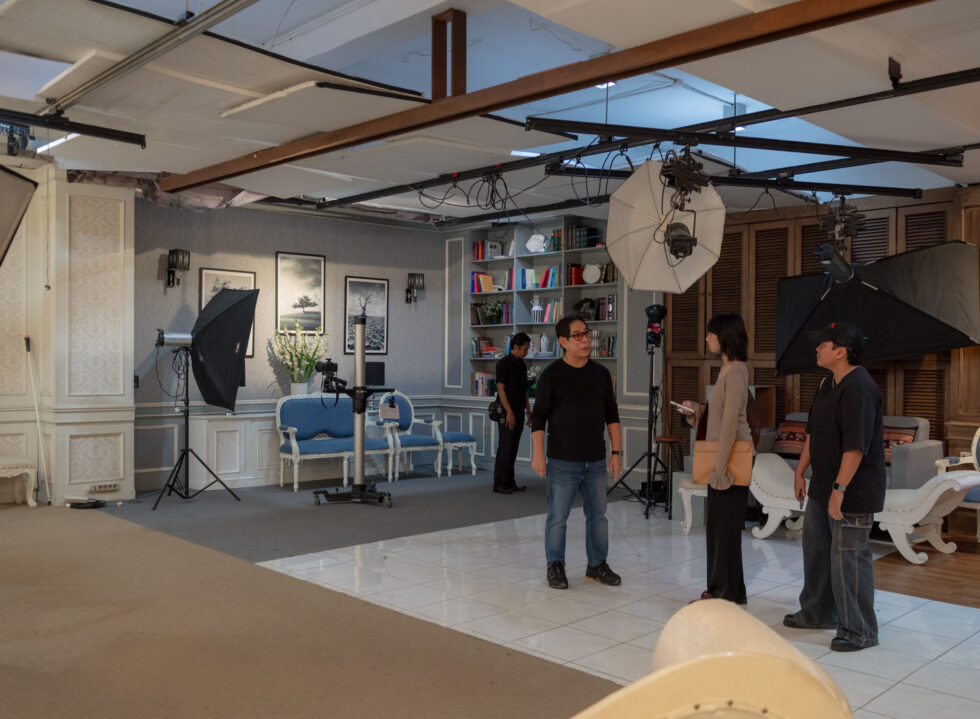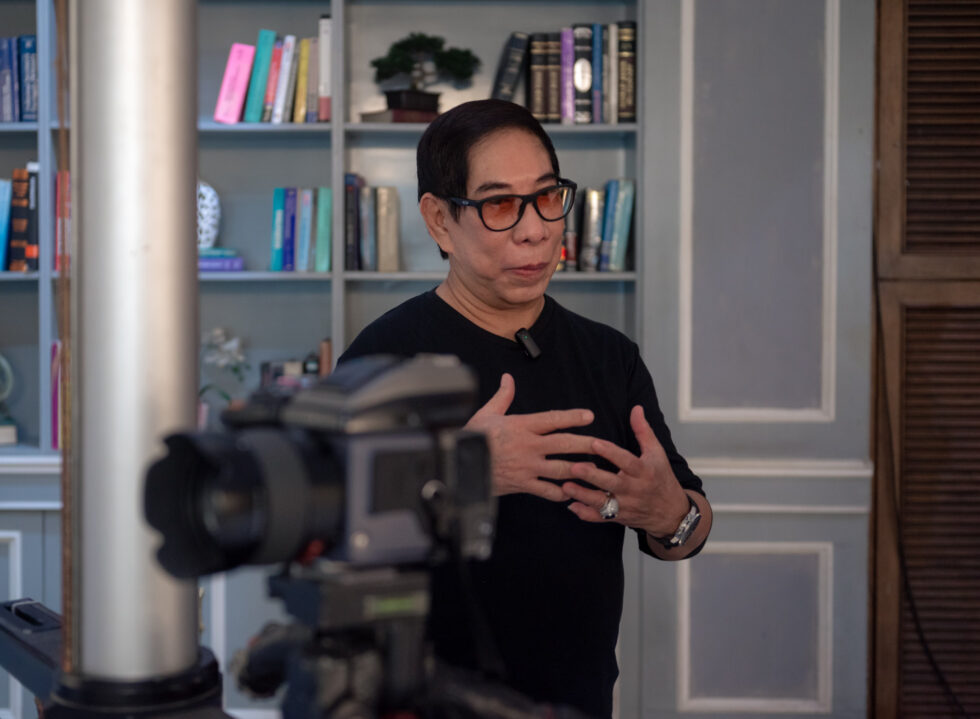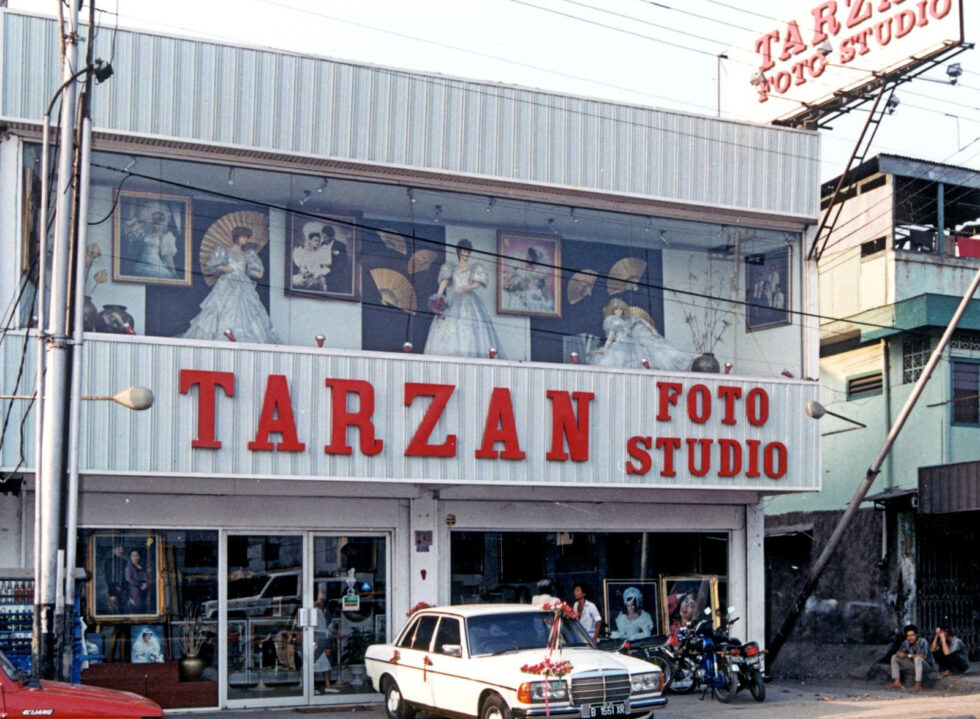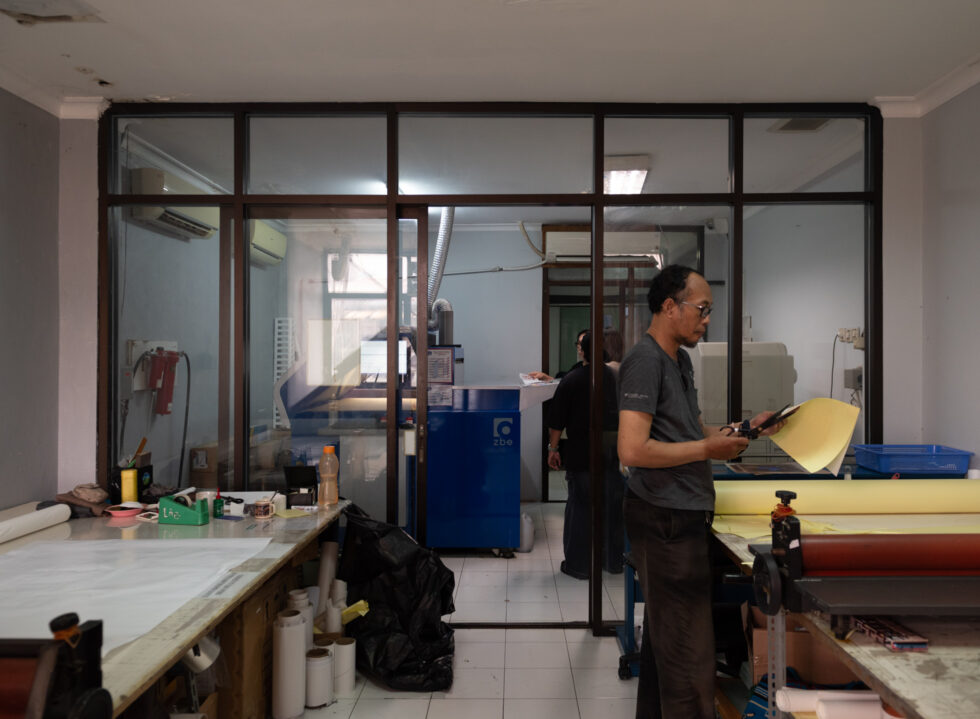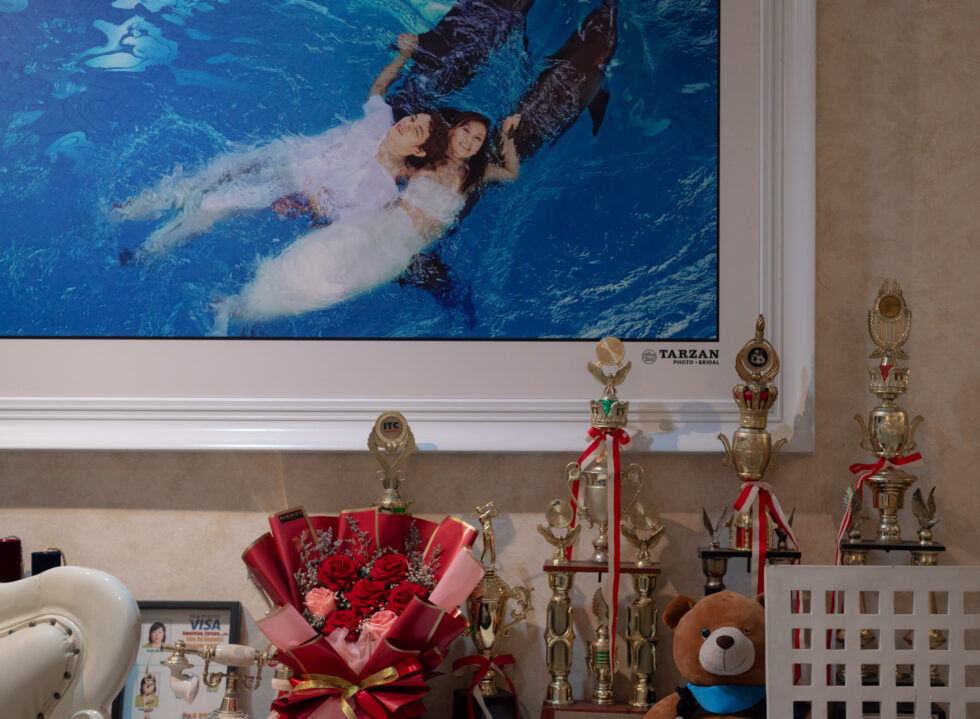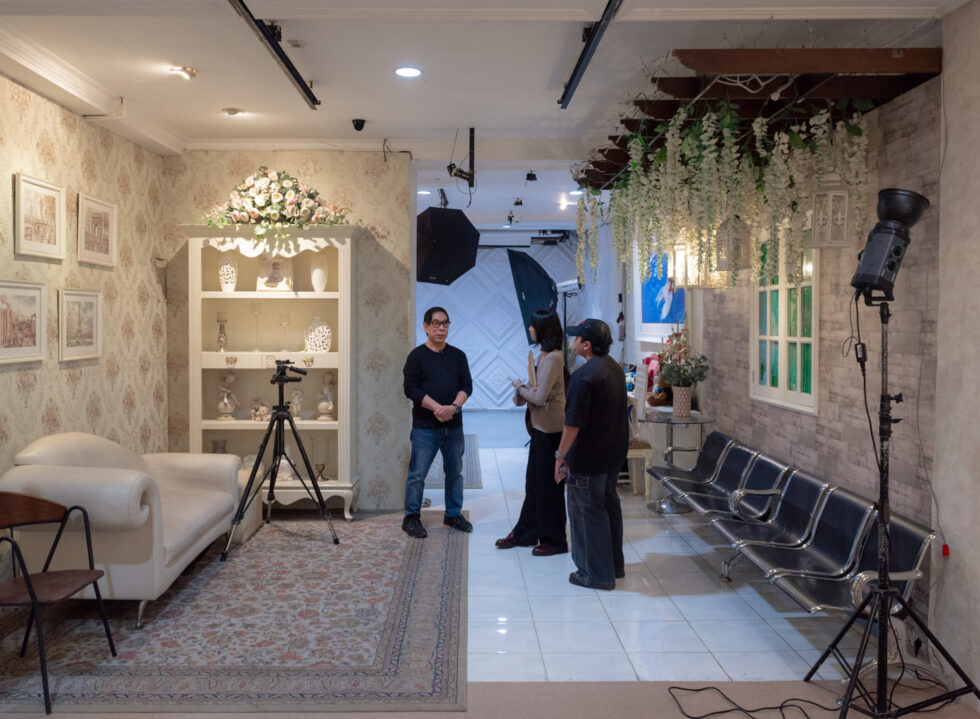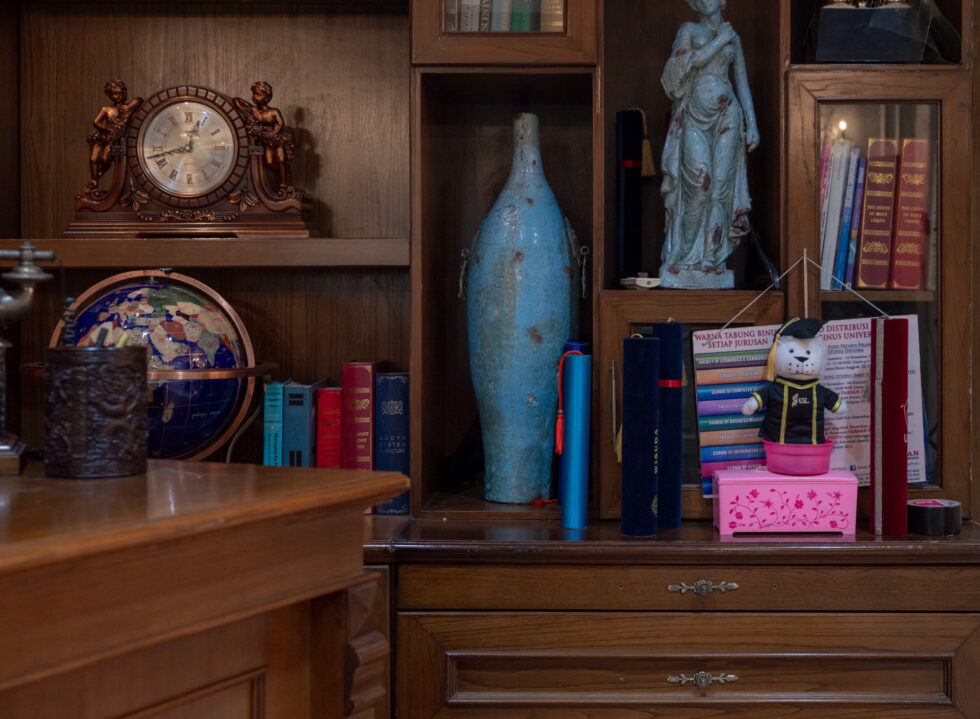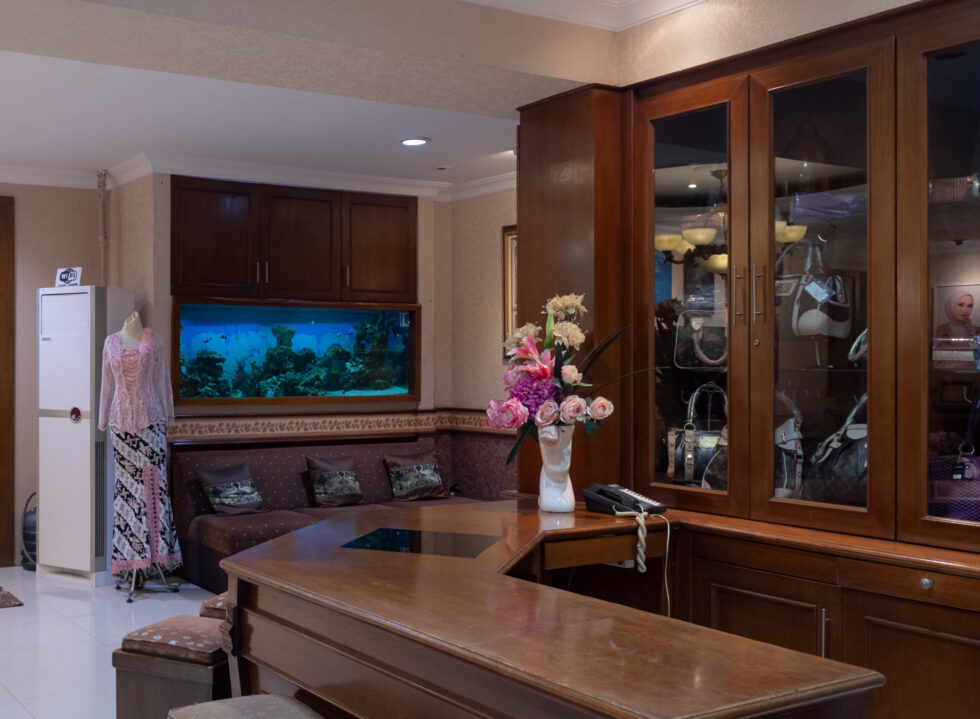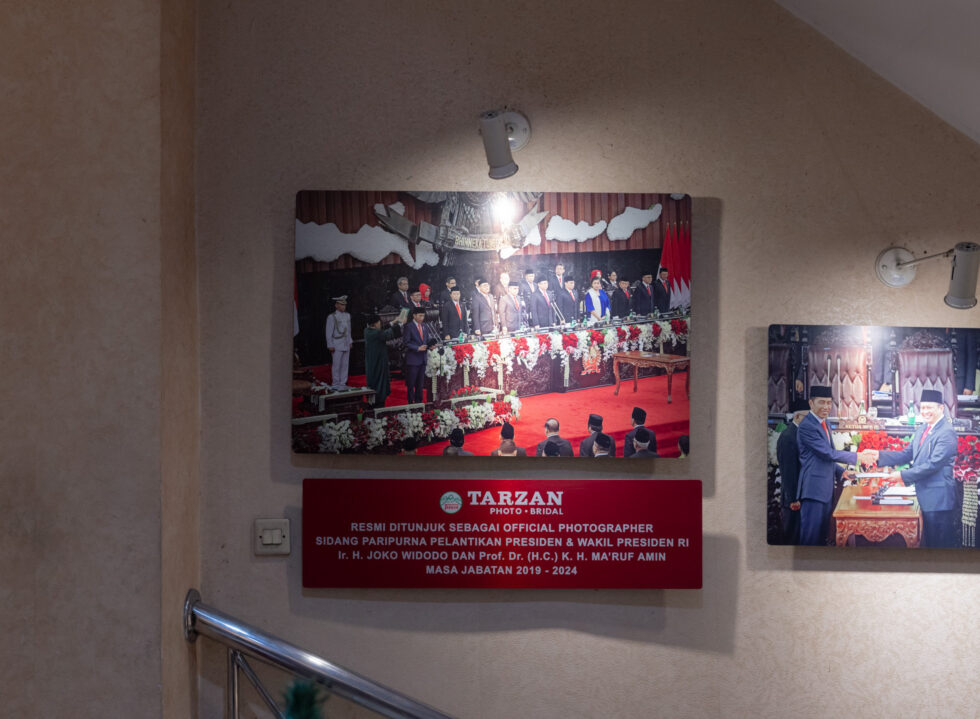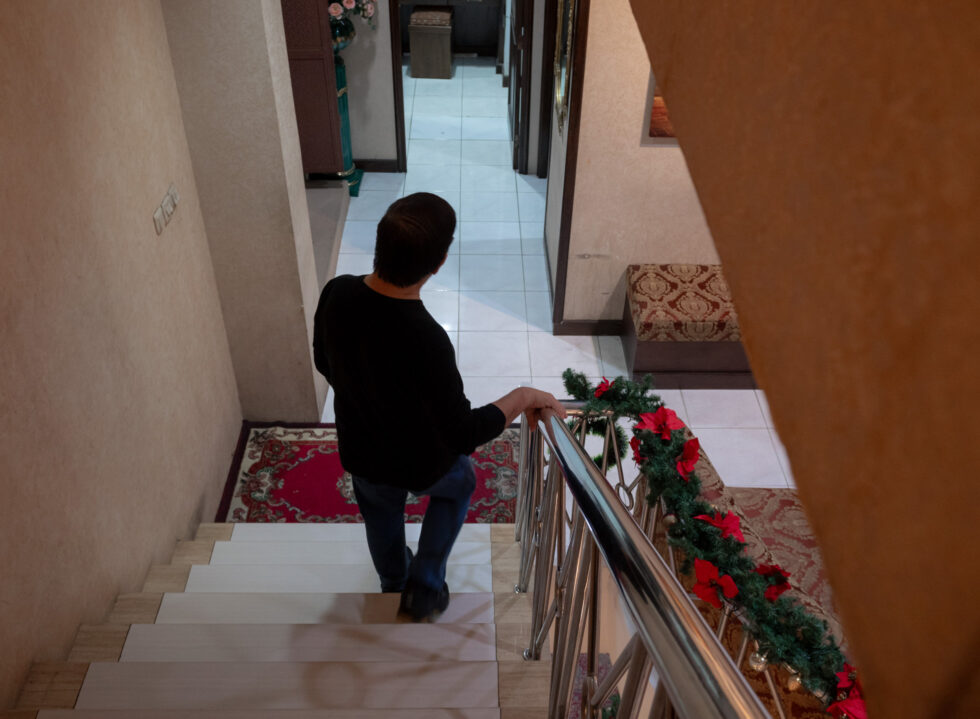“Back then, every test shot was taken with a Polaroid first. Can you imagine asking [the then] President Megawati to wait and stand still while the photo is being developed? Probably the longest minute of my life,” reminisced Jimmy Iskandar, owner and photographer of Tarzan Photo at its headquarters at Roxy Mas, Central Jakarta.
The photography studio, known for taking bridal, family, and graduation portraits—and notably five Indonesian presidents, newly-ordained government officials and national-scale events—will be celebrating 76 years in business this year.
First opened in 1948 by Jimmy’s father and Chinese immigrant, Tjang Khioe Sian, Tarzan has taken shape from a humble photo studio specialising in black and white ID photos to becoming one of the early pioneers of canvas photography in Indonesia, a pivotal step that launched the studio to popularity as Jimmy took over in the ‘80s. Today, Tarzan is regarded as the go-to photography studio in the city that many families, newlyweds, graduates, and even high-ranking officials trust to immortalise their milestones and celebrations.
“Back then, there was no seminar, no workshop, no Google! I had to experiment and go back and forth printing photos on canvas myself.”
“Almost no one was executing canvas photography at the time. You can say I was the first one,” recounted the father-of-three. Valued around IDR 1,5 million per canvas then, many seemed to be enthralled with the unique result canvas photography produced; it was also an affordable alternative to portrait painting at the time, sparking word-of-mouth enthusiasm that reached even the upper echelons—the beginning of how Tarzan started to photograph presidents at the Presidential Palace in the first place.
“Back then, there was no seminar, no workshop, no Google! I had to experiment and go back and forth printing photos on canvas myself. It was like going into a dark cave without candles—that was just the situation back then for people in this field,” shared Jimmy.
When it comes to photographing important figures, the level of preparation also varies. “We’re already familiar with the code of ethics, so it wasn’t hard directing them one-on-one. But it’s different when the scale is like the Asian-African Summit. Imagine managing 100 heads of state and photographing them in under two minutes!” recalled Jimmy when Tarzan was commissioned as the official photographer for the Asian-African Summit 2005, also known as the Bandung Conference.
Clad in a casual-formal ensemble of black sweater and jeans, the 76-year-old bespectacled man often shares his stories with a hint of pride, akin to how a grandfather would talk fondly of bygone days, or an elder reminiscing the hardships of the past—even insinuating how the younger generation has it easy these days. To some degree, this is also how Jimmy observes today’s young and aspiring photographers.
“Whether it was a wedding or any photography job, I would always be dressed to the occasion. You have to take care of your appearance, that’s one of your pride as a photographer,” advised Jimmy, showing slight displeasure at how some young photographers today would arrive at the job underdressed. “It’s also about cultivating trust and confidence with your clients. Say if you’re a wedding photographer, the bride should want to let you in her room and show off her prized jewellery to you.”
“Even now when I meet customers at a mall, they would call me ‘Pak Tarzan’.”
Inside the four-story headquarters comprising several studio sets, a makeup room, bridal fittings and printing space, this passing of time is further felt.
A cabinet storing Jimmy’s collection of cameras throughout the years, from the 1956 edition medium format Yashica Mat to the prestigious Swedish Hasselblad (also known as the first camera brand on the moon), is showcased like a shrine. Photographs of Indonesian presidents spanning the Soeharto era to Jokowi Widodo’s 2019-2024 inauguration are grandly framed. Pre-wedding photoshoots with over-the-top backdrops, from couples swimming with dolphins at SeaWorld Ancol to posing at the Great Wall of China, are hung neatly along the corridor. Meanwhile, the loyalty of longtime staff of photographers, photo editors to administrators is further emphasised through over 20 years of service.
“I grew up watching my father playing with cameras, but I was an autodidact. Before taking over, I worked mostly as a wedding photographer. I also took photographs of celebrity calendars,” said Jimmy. According to family lore, his father used to ride a bicycle and take photographs of passersby back in his homeland in China. The name Tarzan was also initially called Taishan, named after a sacred mountain in the prefecture of Tai’an in Shandong, China.
“My father was smart. He chose a name that people would easily remember. At the time, Tarzan’s feature films were also popular, so he eventually took the name since the pronunciation of Taishan was similar. It sticks. Even now when I meet customers at a mall, they would call me ‘Pak Tarzan’.”
“None of my children wanted to inherit Tarzan. They said there’s no money in it [the industry], so I’m the only one still holding on to it.”
Bridal photos have not been Tarzan’s specialty for quite some time now. Nowadays, family and graduation portraits take up a lot of the studio’s traffic, with package prices ranging from IDR 2 million to IDR 24 million. During the weekends, the studio, whether it’s the Roxy headquarters or the Pondok Indah outlet, would be occupied with families taking their family portraits or collecting their prints. When it’s graduation season, double the crowd.
One of the few family-owned photo studios that are still thriving in the city, Jimmy now leads Tarzan with over 80 personnel, including freelance photographers and mainstay staff, even when he’s not the one behind the camera anymore. But come orders from high-ranking officials, like the recently-appointed Commander of Indonesian National Armed Forces Agus Subiyanto, Jimmy would still go out to the field and personally take care of the shooting process.
“None of my children wanted to inherit Tarzan. They said there’s no money in it [the industry], so I’m the only one still holding on to it,” said Jimmy, who shared that his children are now dabbling in properties. “Being a photographer, you have to accept long hours. You also trade weekends, a time to be with your family, to go to another family’s celebrations. But that’s just the ups and downs of being in this field. I’m just enjoying everything now,” Jimmy closed.
“Maybe it’s my old-school mindset, but today’s generation is all about instant win. My father always used to say that to be successful, you have to withstand being on the hot seat, even if it takes ten years. Everything is a process, and you have to trust it.”

